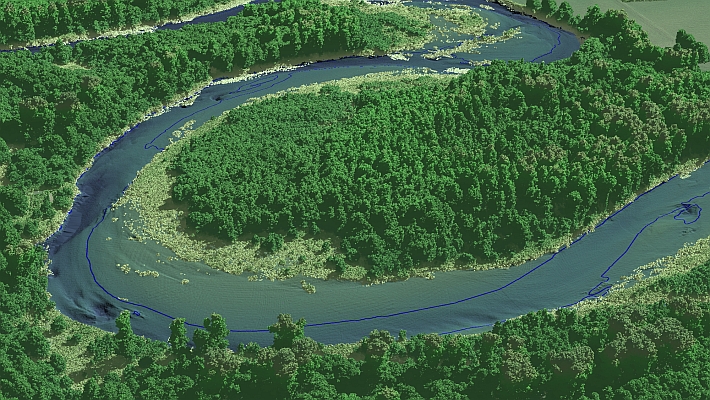Applanix introduced an all new version of its industry leading Global Navigation Satellite System (GNSS)-Aided Inertial post-processing software for airborne mapping and surveying applications—the POSPac™ Air 5.0 software. POSPac Air 5.0 features new patent pending Applanix software technology that significantly increases the efficiency, accuracy, and robustness of mapping and surveying using GNSS on an airborne platform. It does so by using a combination of GNSS network and inertial post-processing methods that work together to eliminate or reduce the restrictions currently associated with high accuracy GNSS positioning in an airborne environment.
The POSPac Air 5.0 software also includes an innovative module for using GNSS network corrections to increase accuracy. Based upon Trimble® VRS™ technology, the Applanix SmartBase™ software can use the data logged from a network of public or private GNSS reference stations to generate a set of GNSS observables that correct for the atmospheric errors at the location of the remote receiver in the aircraft. These along with the remote receiver observables are then post-processed with data from the Inertial Measurement Unit (IMU) using the new Applanix IN-Fusion™ technology, to simultaneously solve for the GNSS ambiguities and the position and orientation of the aircraft. The Applanix SmartBase corrections ensure that the error due to atmospheric delays is significantly reduced anywhere within the network of receivers, meaning the correct GNSS ambiguities can be quickly and reliably computed. The tight integration with the inertial data allows the software to maintain memory of the GNSS ambiguities during cycle slips or even full outages.
These features mean that reliable decimeter level or better accuracy can be obtained from existing reference station networks without the need to set up a dedicated basestation close to the project area, and the aircraft can be flown with bank angles well above 20 degrees. This has the benefit of reducing the expenditure of conducting a high-accuracy airborne survey, by reducing the costs associated with setting up a reference station infrastructure, and by reducing the time it takes to fly a survey by shortening the duration of the turns. At the same time the robustness of the solution is increased, reducing the cost associated with the need to re-fly a mission.
"POSPac Air 5.0 represents a major advance for the airborne mapping and surveying market," said Joe Hutton, Director of Airborne Products at Applanix. "The need to fly flat turns has always been one of the barriers to efficient use of high-accuracy GNSS positioning. Eliminating this not only saves our customers money, but it also improves safety by reducing pilot fatigue and allowing them to focus more on their surroundings."
Included in the Applanix SmartBase module is the ability to automatically download existing reference station data from the Internet. Up to 50 reference stations can be processed at a time, with a minimum of four recommended for redundancy and robustness. POSPac Air 5.0 software also includes an all new Graphical User Interface (GUI) based on the Microsoft .NET architecture. POSPac Air 5.0 is expected to be available in the fourth quarter of 2007 through the Applanix sales network.
Training for the Applanix POSPac Air 5.0 software will be available during Trimble Dimensions 2007. For details see www.trimbleevents.com. For more information on the Applanix POSPac Air 5.0 software, please visit www.applanix.com.
Source: Applanix






